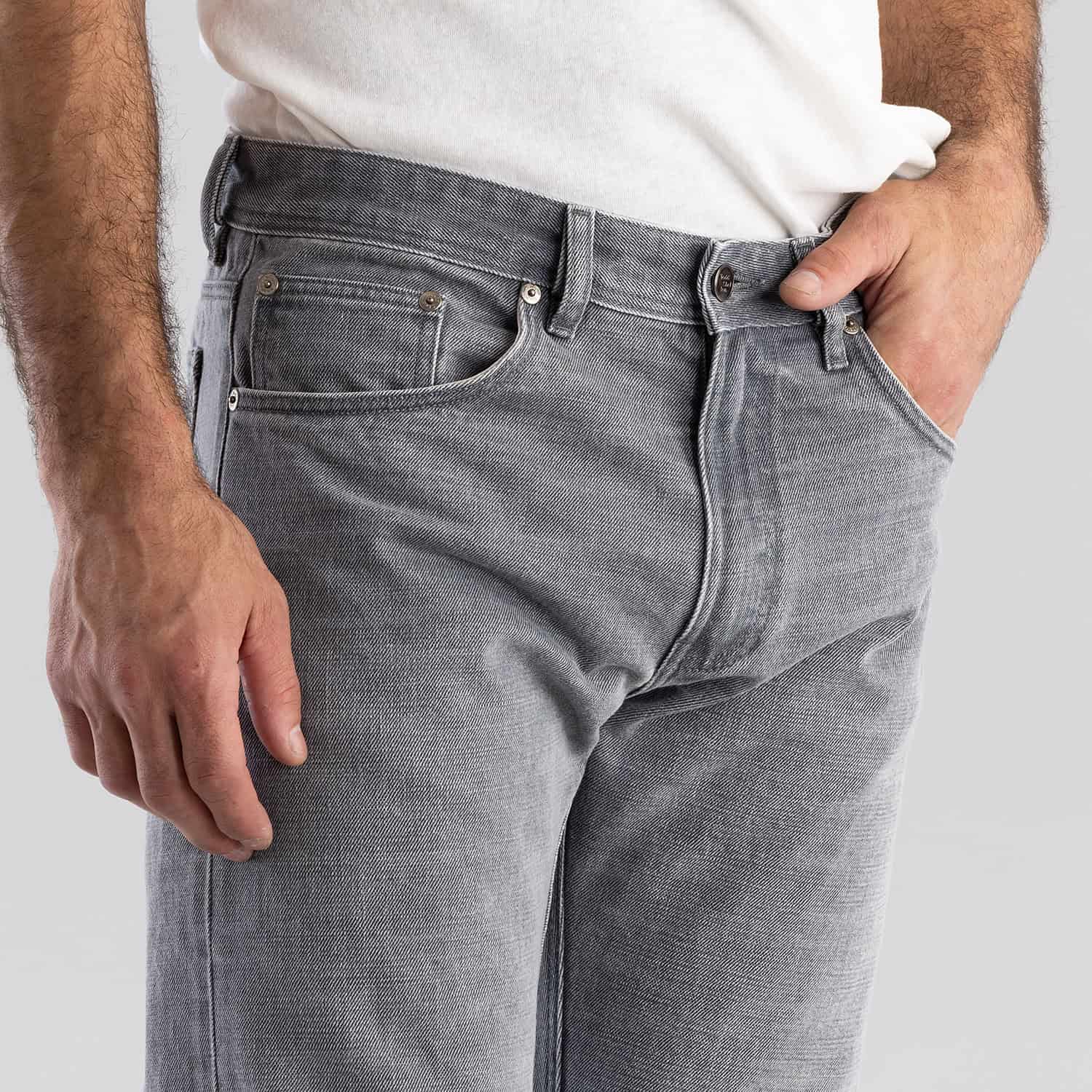How to Measure Mens Pants
This article shows you how to measure mens pants six main fit points: waist, seat and thigh, rise, ankle, and inseam length.
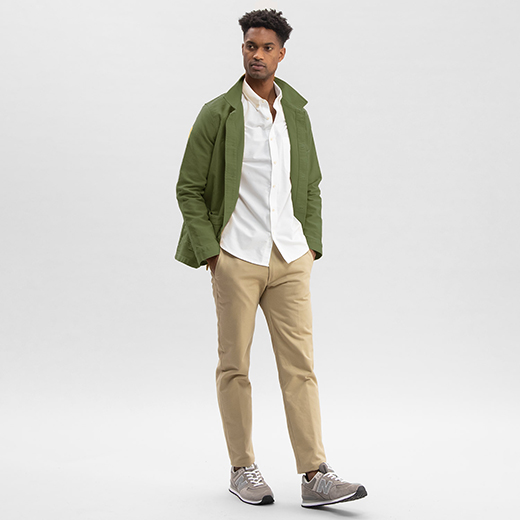
Contents
Expect measuring to vary
Although there are standards for how to measure mens pants, there are still variations in where the measurement should start on the garment.
If you’re providing measurements to a company or comparing measurements to a size chart, first get familiar with how the company measures—and expect some variations between how you measure and how they measure.
About this guide
This How to Measure Mens Pants guide reflects how we measure here at Todd Shelton and is a tutorial for our customers. Please keep in mind other companies may measure differently.
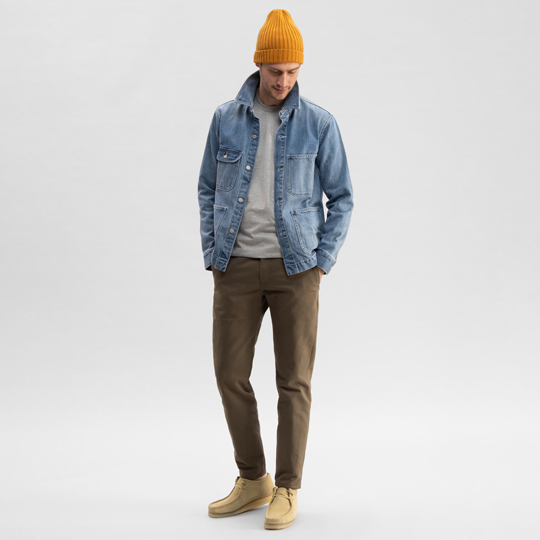
Detail-minded men who care about fit use us
We specialize in manufacturing a wide range of fit options designed to help men solve fit problems and improve the fit of their pants.
Waist
Waist is your pants primary fit option. Your pant is built from the waist down.
Most pant waist sizes today are not true to size, i.e., most brands add extra inches to the actual waist measurement. For example, a pant waist labeled 34 may measure 35 1/2 inches.
At Todd Shelton, we add 2″ to the labeled waist size. For example, a 34 waist will measure 36″. Adding 1 1/2 – 2″ is an industry average, meaning our pant waist measurement will be in-line with most pant brands. For this reason, we recommend starting with your regular pant waist size.
How to measure mens pants: waist
To gauge your Todd Shelton waist size, you can measure a pant you already own.
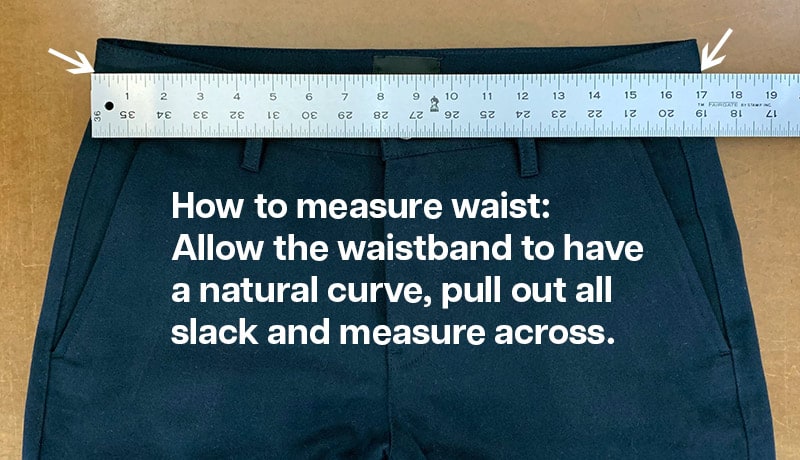
Start with your best-fitting pant, preferably laundered or cleaned (not stretched from wear). Lay your pant on a rigid table (not a bed or other soft surface) like shown above. Pull the outside edges of the waistband outwards to remove any slack. Measure across in the center of the waistband – the edges of your measurement should not exceed the outside edges of the waistband.
Measure again to make sure your measurements are consistent. Compare your waist measurement to the pant sizing chart.
How to measure mens pants: seat
Seat is the area around the pant at mid-zipper. We offer 7 fits separated by 1″ around the seat.
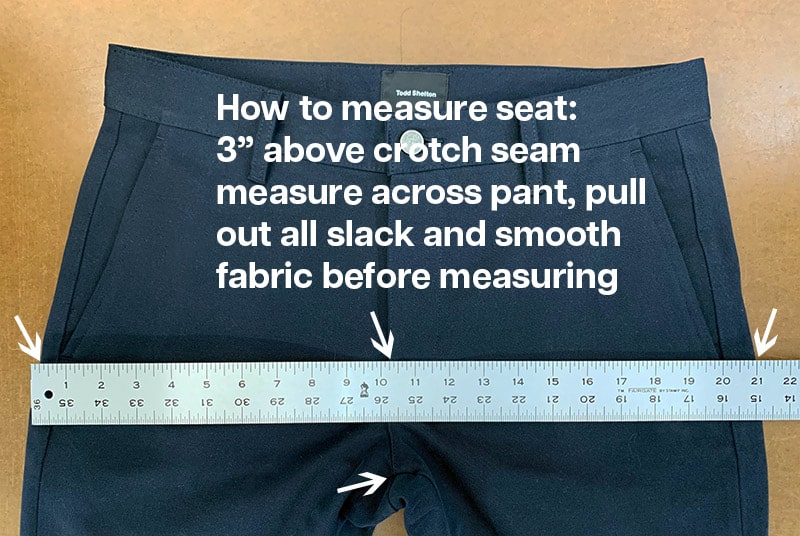
To gauge your seat fit, you can measure a pant you already own.
Start with your best-fitting pant through the seat and thigh, preferably laundered or cleaned (not stretched from wear). Lay your pant on a rigid table like shown above. Smooth the pant flat, pull out any excess fabric folded underneath the pant.
We measure the seat 3″ above the crotch seam, across the pant. Starting at 3″ above the crotch seam, measure across the pant. Write that number down, then double it (for example, if you measure 20″ across, double it to 40″), for your total seat circumference.
Measure again to make sure your measurements are consistent. Compare your total seat circumference measurement to the pant sizing chart.
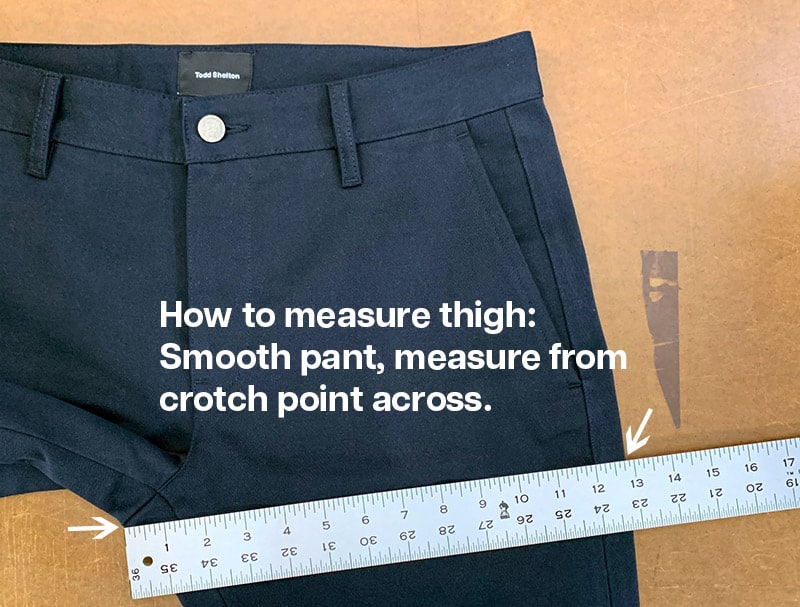
How to measure measure mens pants: thigh
We measure the thigh at the crotch point, across leg (shown above). Compare your thigh measurement to the pant sizing chart. You can also email us the measurements you take and we’ll help you match your measurements to our sizes.
Keep in mind, seat and thigh areas are stress areas. Pressure applied to the fabric when sitting, causes these areas to stretch with wear. Take stretching into account when evaluating your fit.
How to measure mens pants: front rise
Rise is an overlooked fit point because menswear brands don’t offer rise options. Rise affects where a pant sits on your waist. Our pants come standard with a mid-rise, and we offer 3 more rise options for fine-tuning: 3/8″ Lower, 3/8″ Higher, and 3/4″ Higher.
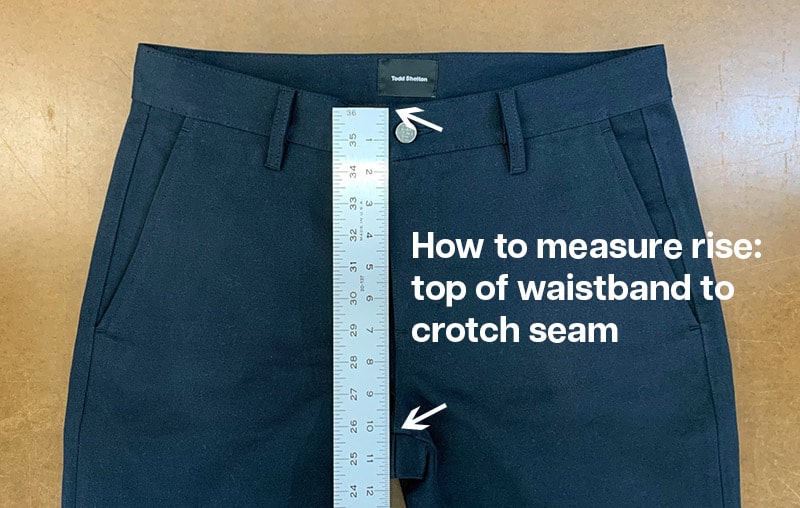
Measure rise from the top of the waistband down to the crotch seam.
To understand the rise you need, you can measure a pant you already own. Start with your best-fitting pant, measure the front rise (as shown above). Compare your measurement to our pant sizing chart.
How to measure mens pants: knee and ankle
The knee and the ankle are different fit points. We offer three fits other than Standard, each separated by 1/2″ in width: Slim (1/2″ less wide than Standard), Straight (1/2″ more wide than Standard), and Wide (1″ more wide than Standard).
Most of our customers keep knee and ankle fit options consistent. But some customers need to separate them. For example, customers with bigger thighs above the knee, bigger knees, or bigger calves may choose a Straight knee and a Standard ankle. The wider knee provides extra room from the lower thigh to the calf.
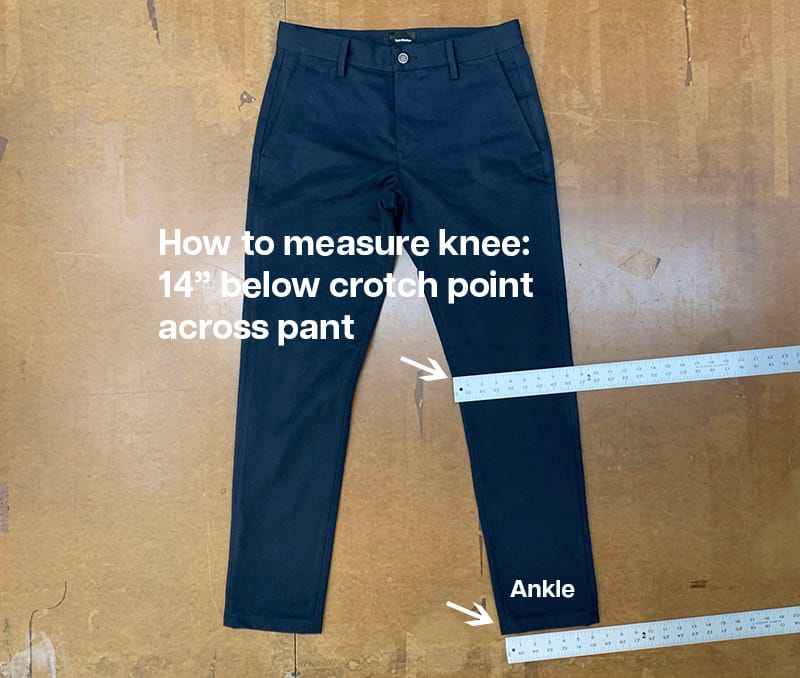
We keep ankle measurements are static for all inseam lengths. For example, if our pant sizing chart shows a 7″ ankle, it will be 7″ regardless of whether the pant is a 26″ inseam length or a 36″ inseam length.
To gauge your Todd Shelton knee to ankle fit, you can measure a pant you already own.
Start with your best-fitting pant around your knee and ankle, measure both knee and ankle like shown above. Measure the knee 14″ below the crotch seam. Measure the ankle just above the bottom hem (measuring on the hem may add bulk that skews your measurement).
Consider adjustments you’d like to make, then compare your target measurement to our pants sizing chart.
How to measure mens pants: inseam length
Customers have different preferences for lengths, we generally advise the pant stops at the top of your shoe. Or the top of your shoe plus 1/2″. We offer inseam lengths in 1/2″ increments.
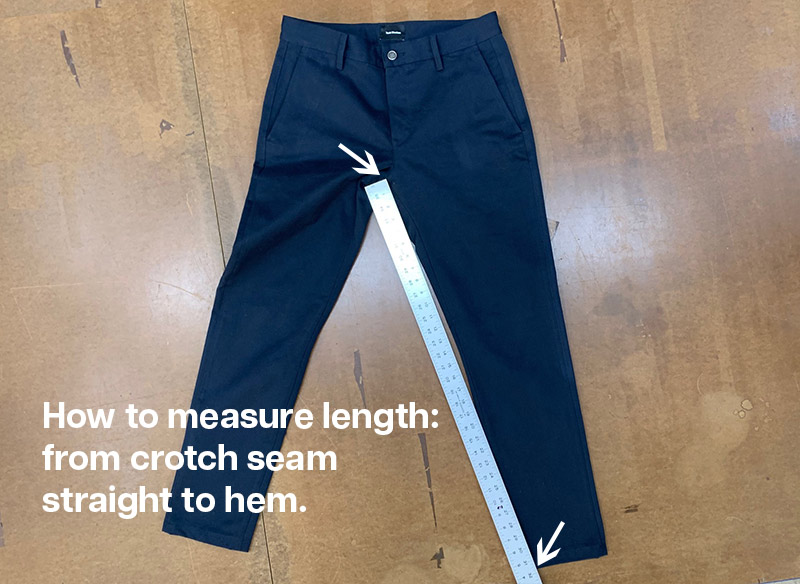
Measure inseam length from the crotch seam to the bottom of hem. The crotch seam is where the four-leg panels come together.
To gauge your inseam length, you can measure a pant you already own. Start with a pant with the best-fitting length. Lay your pant on a rigid table, keep the outseam (not inseam) straight and measure (as shown above). Then consider adjustments you’d like to make.
We hope this how to measure mens pants guide was helpful. If you have questions or feedback on this article, please email us at [email protected].
